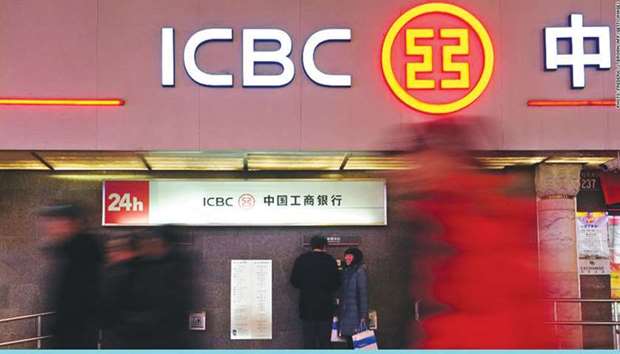Pakistan is in talks with a Chinese financial institution to obtain $1bn as a foreign commercial loan, as its recent internal assessment revealed that inflows from traditional lenders would fall below budgeted projections.
The World Bank and the Asian Development Bank (ADB) have already withheld $700mn as balance of payments’ policy loans due to deterioration in macroeconomic indicators in the past one year.
Amid declining foreign exchange reserves, the government is now in the process of scrutinising the loan term sheets and the agreement is expected to be reached this month, said sources in the finance ministry. The country has already obtained $1bn as foreign commercial loan from the Industrial and Commercial Bank of China (ICBC) in the past three months.
The cost of borrowing from the Chinese bank could go over 5% this time due to increase in the London Interbank Offered Rate (Libor), said the sources. The six-month US dollar Libor was 2.228% on March 2, which would push the overall borrowing cost for the government in the range of 5.1% to 5.3%, said the sources. Last year, the Libor remained around 1.5%, which kept commercial borrowing cost below 5% for most of the deals.
During the last fiscal year, the government had also borrowed $2.3bn from three Chinese financial institutions at three- to six-month Libor plus 2.7% to 3.02% spread, according to the finance ministry publication.
In addition to the upcoming borrowing, the government is also expecting to receive $200mn from a Chinese bank immediately to support foreign currency reserves, said the sources. The State Bank of Pakistan’s (SBP) official foreign currency reserves slipped to $12.4bn last week, which are now close to the minimum threshold of two and half months of import bill cover.
For the last four years, the government has shifted its focus towards easy but relatively expensive source of financing. These commercial deals normally do not get much public attention, unlike the case of foreign bonds. The decision to get $1bn has been taken after the government last month called off the $1bn eurobond issue, said the sources. The government was ready to float bond but reversed the decision after financial advisers informed it that the ten-year bond may cost it 7.3%, said the sources.
In November, the government generated $1.5bn through the 10-year Eurobond at a fixed rate of 6.875%, which was 455 basis points above the corresponding 10-year US Treasury benchmark rate. Since the start of the current fiscal year, total foreign commercial borrowings have already surged to $1.8bn – far higher than $1bn budgetary estimates.
Last month, the Ministry of Finance informed the National Assembly Standing Committee on Finance that its gross external financing requirements for the remainder of this fiscal year were $9.5bn.
The $9.5bn financing requirement for February-June period has been worked out on the assumption of a possible $7bn current account deficit and $2.5bn debt servicing cost.
Total gross financing requirements for the fiscal year have now been revised upward to $24bn as against the earlier estimates of $17bn.
It had also informed the panel that the government was expecting $3.8bn from traditional multilateral and bilateral lenders. However, a fresh assessment by the finance ministry over the weekend revealed that lending from the World Bank, the ADB and Islamic Development Bank would fall short of budgeted projections.
Against the budgetary estimates of $1.228bn, the ADB is now expected to disburse around $925mn, said the sources. The Manila-based lender has already disbursed $498mn for projects’ financing in the first seven months. It dropped $200mn energy loan.
The World Bank is now expected to give only $790mn even after making some extra efforts, which was far below the budgetary estimates of $1.2bn. The World Bank has already disbursed $289mn in the July-January period but withheld $500mn policy loan.
Lending from China could increase to roughly $1.9bn, which will partially compensate for the shortage, said the sources.

Pakistan has obtained $1bn as foreign commercial loan from the Industrial and Commercial Bank of China in the past three months following the country’s recent internal assessment revealed that inflows from traditional lenders would fall below budgeted projections
